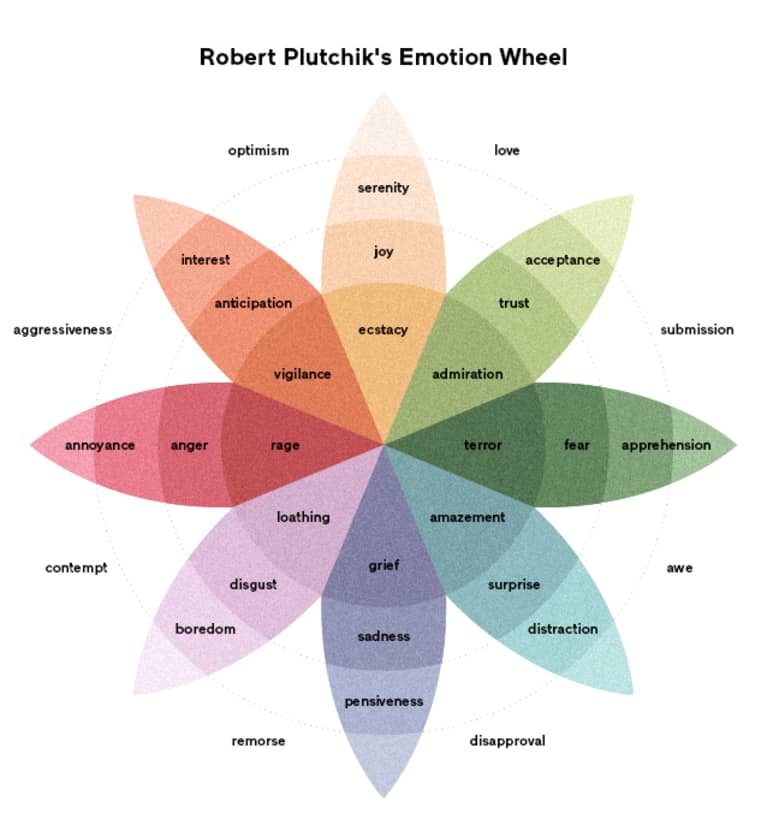25 May How To Use The Emotion Wheel To Better Understand Your Feelings
via Mind Body Green by Julie Nguyen
Complicated and overwhelming feelings can come into play when you are going through something new or tough in life. If there’s a lot going on internally, it can be hard to figure out exactly what you’re feeling and even harder to know the appropriate reaction to have. If you’re someone looking to develop emotional literacy and better navigate difficult emotions, look no further than the emotion wheel.In This Article
- 1Basic concept2Plutchik’s emotion wheel
- 3Wilcox’s feeling wheel48 primary emotions
- 5How to use the wheel6Components of an emotion
- 7Benefits8Where to use it
What is the emotion wheel?
“The emotion wheel is a psychological tool that helps individuals identify and verbalize their complex emotions,” therapist Genesis Espinoza, LMFT, explains. The wheel identifies eight primary human emotions and tiers of related, more nuanced versions of those primary emotions.
“Primary emotions are basic emotions that humans are born with that have been wired into our brains,” Espinoza says. “Along the outer edges of the emotion wheel, you’ll find low-intensity emotions such as acceptance, distraction, boredom, and so on. As you move toward the center, the color on the emotion wheel deepens and milder emotions become your basic emotions.”

Robert Plutchik’s wheel of emotions.Image by Illustration by Grace Lee / mbg Creative
The tool has many variations (also known as the Junto, Geneva, or feelings wheel), but the wheel’s overall goal is to clarify what’s happening in our inner world, home in on the specific nuances of that emotional state, and understand the depth and purpose behind those emotions.
Psychologist Robert Plutchik, Ph.D., created one of the most popular versions of the emotion wheel, a flower-shaped diagram to visually illustrate our emotions and their various, adjacent relationships to each other. He believed that while humans have the capacity to experience over 34,000 unique emotions, there are eight primary, primordial emotions that serve as the foundation for other feelings, in all of their degrees and intensities, to exist and take place.
To make it easier to recognize and describe our feelings, the wheel was gridded out in a way to demonstrate emotions in its various states, dyads, constructs, combinations, similarities, and dissimilarities. Instead of casting emotions aside as too mysterious or vague for our interpretation, he wanted to understand their biological basis and the connections between them. Through his psychoevolutionary approach, he asserted that our basic emotions play a role in human survival and can be patterned out to reveal common emotional elements that we all go through…
… keep reading the full & original article HERE

